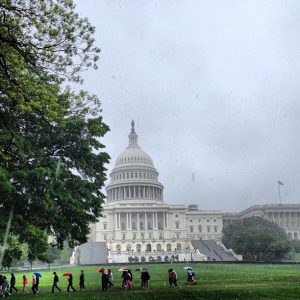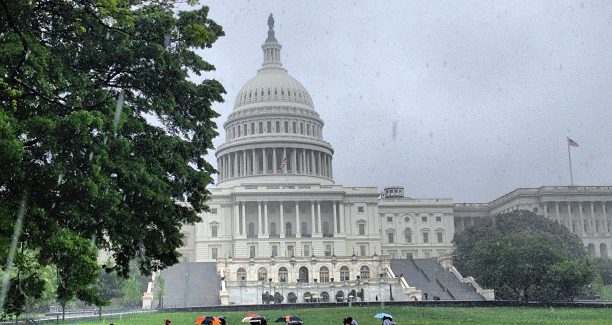If trends toward warmer climates continue at the same pace that they have during the last few decades, the U.S. could see extreme rainfall events up to four times more frequently by the end of the 21st century, a new study by the National Center for Atmospheric Research (NCAR; Boulder, Colo.) finds.

A new study by the National Center for Atmospheric Research warns that rain could fall up to four times more frequently and could be up to 70% more intense in the U.S. by the end of the century. Photo courtesy of Architect of the Capitol.
These storms could also be up to 70% more intense.
According to recent data from the National Oceanic and Atmospheric Administration (NOAA), last season was the warmest autumn experienced in the U.S. since at least 1895. The National Aeronautics and Space Administration (NASA) supports the notion of global warming with a finding that the 10 warmest years in the recorded history of the world have all taken place since 1998.
Warmer air can hold more moisture, which translates into heavier and more frequent rainfall.
Prepare for precipitation
NCAR researchers used advanced modeling software to render an ultrahigh-resolution representation of how climate change could affect precipitation rates in specific regions. Working from a massive model of the U.S. divided into 4 km- (2.5 mi.-) across spaces of land, the researchers concluded that an average temperature increase of 1°C will correlate to about 7% more extreme precipitation for any given area.
This estimate, however, is far from uniform. In mid-latitude areas — ranging from about the bottom of North Carolina to the top of Oregon — higher temperatures generally raise the risk for extreme precipitation by far more than 7% per degree. In high-temperature locations, researchers predict that more heat could actually mean less extreme rainfall due to air moisture limitations. Regardless of current temperatures, coastal regions are thought to be the most susceptible to extreme, climate change-induced rainfall.
Action today for resilience tomorrow
The simulation, which took NCAR researchers about a year to produce, cannot yet account for “what-if” scenarios. It assumes that the rate of global warming observed from 2000 to 2013 will remain constant, but could one day offer glimpses of a future in which climate change either slows or accelerates.
In the study report, available as an open-access paper from the journal Nature Climate Change, researchers contend that one way to mitigate torrential late-in-the-century downpours is to reduce greenhouse gas emissions. If this approach fails, the researchers say, cities across the country will need to invest in stronger and more robust stormwater systems — reservoirs, drainage networks, green infrastructure, etc..





